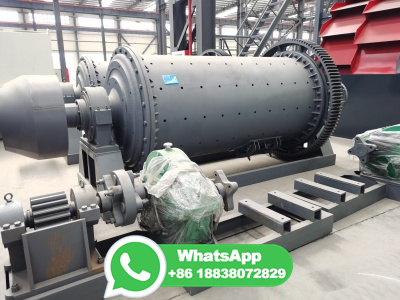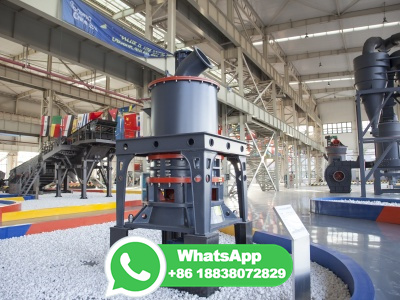
Bauxite is the primary ore for aluminium, and it undergoes an intermediate refining stage, known as the Bayer process, to produce alumina, which is then subjected to electrolysis to produce aluminium. This refining process generates bauxite residue as a byproduct. To produce 1 kg of aluminium, it requires 2 kg of alumina, which consumes 6 kg ...
WhatsApp: +86 18203695377
Aluminum is the most abundant metal in the crust of the Earth—but it doesn't exist in its pure form in nature. Bauxite ore first needs to be mined, then alumina is extracted from the bauxite ...
WhatsApp: +86 18203695377
Bauxite is a lategame ore found in the world. It is the raw ore of Aluminum, combining it with Water in a Refinery produces Alumina Solution for further processing. Bauxite can be harvested by hand (default E) in trace amounts from resource deposits scattered across the world, or from inexhaustible resource nodes on which Miners can be constructed to extract automatically. Additionally ...
WhatsApp: +86 18203695377
Alumina production: Bayer process: calcination . Alumina is produced from bauxite in the wellestablished Bayer process, followed by a calcination process. This Bayer process was invented in 1888 by Carl Josef Bayer and contributed with the development of aluminium to the ongoing industrial revolution. The Bayer process produces pure ...
WhatsApp: +86 18203695377
2. Bayer process alumina production. Bauxite ore is the main raw material used in alumina production. The alumina production in major regions of the world in 2017 is shown in Figure 1. It can be seen that the growth in aluminum production continues to be driven by countries in Asia and the Gulf area, 2017 global aluminum production is nearly ...
WhatsApp: +86 18203695377
Bauxite via the Bayer process. This process will be briefly introduced in the following, as well as the reduction to aluminium, the anodes production and further steps of primary production. Alumina Production (Bayer Process) The aluminium production starts with the production of alumina from bauxite according to the socalled Bayer process.
WhatsApp: +86 18203695377
The process of extracting bauxite has been used for centuries, but the arrival of modern technology has made bauxite mining an important part of the global economy. ... The company produces highquality primary bauxite and alumina concentrates, as well as aluminum products, using its primary and concentrate resources. In addition to these ...
WhatsApp: +86 18203695377
Aluminum ore, also known as bauxite, is a naturally occurring mineral rock that contains aluminum in the form of aluminum oxide (Al2O3) mixed with various impurities. Bauxite is the primary source of aluminum, which is one of the most abundant elements in the Earth's crust, comprising about 8% by weight. ... Bayer process for bauxite: Bauxite ...
WhatsApp: +86 18203695377
Recycling a ton of aluminum requires only about 5 percent of the energy and saves almost nine tons of bauxite from being hauled from mines. Even antiplastics campaigners agree that recycling ...
WhatsApp: +86 18203695377
Fortunately, the environmental impact of that process can be somewhat balanced out by postmining rehabilitation, efficient recycling, and generally reducing our consumption. The Process: Bauxite to Alumina to Aluminum. Aluminum is hidden in an ore called Bauxite. It's a red dirt and clay mixture commonly found in Australia, Brazil, and India.
WhatsApp: +86 18203695377
ALUMINA FROM BAUXITE: THE BAYER PROCESS. Bauxite, the principal ore used for aluminum smelting, is named after Les Baux, Provence, the village where the first deposits were discovered. Bauxite contains hydrated alumina equivalent to as much as 4060% Al 2 O 3, and is free of the other siliceous materials leached out over time. However it ...
WhatsApp: +86 18203695377
Bauxite is generally extracted by open cast mining, being almost always found near the surface, with processes that vary slightly depending on the location. Before mining can commence the land needs to be cleared of timber and vegetation. Alongside this process may be the collection of seeds and/or saplings, for inclusion in a seedbank, which ...
WhatsApp: +86 18203695377
Red mud, also referred to as bauxite residue, is the largest process waste produced during alumina production from bauxite ore by the Bayer method. Approximately 12 tons of red mud are produced ...
WhatsApp: +86 18203695377
The HallHéroult process is the major industrial process for smelting involves dissolving aluminium oxide (alumina) (obtained most often from bauxite, aluminium's chief ore, through the Bayer process) in molten cryolite, and electrolyzing the molten salt bath, typically in a purposebuilt cell. The HallHéroult process applied at industrial scale happens at 940980 °C and ...
WhatsApp: +86 18203695377
Mined bauxite ore is refined into alumina through what is known as the Bayer process. The process, discovered in 1887, extracts alumina from bauxite through crushing, dissolving it in caustic soda, filtration and an electrolytic process. Alumina is a white powder, appearing similar to table salt, which can then be smelted into aluminium metal.
WhatsApp: +86 18203695377
C. The importance of the aluminium sector to Brazil 11 II. ENVIRONMENTAL EFFECTS OF PRODUCING BAUXITE, ALUMINA AND ALUMINIUM 13 A. Introduction 13 B. Bauxite mining 14 1. MRN 14 Revegetation 14 Bauxite Tailings Disposal 14 Rehabilitation of Lake Batata 15 Control of solid particles emissions 17 MRN's environmental policy 17 2.
WhatsApp: +86 18203695377
The separation of the alumina from the impurities in the bauxite ore is usually accomplished by the Bayer Process. In this process the ground bauxite is leached with caustic soda (NaOH) to produce soluble sodium aluminate (NaAlO2), leaving the impurities in the insoluble residue. The aluminate solution is then decomposed producing Al (OH)3 ...
WhatsApp: +86 18203695377
Bauxite residue is the industrial solid waste discharged from the production of alumina by bauxite, which contains a certain amount of ferric oxide in a reddishbrown color, so it is also called "red mud", and is a typical nonferrous metallurgical solid waste (Wang et al. 2018; Xue et al. 2022).The varieties of bauxite residue depend on the grade of the bauxite and alumina production process.
WhatsApp: +86 18203695377
Four tons of bauxite produce one ton of aluminum—enough to make the cans for more than 60,000 soft drinks. Bauxite is formed over millions of years by chemical weathering of rocks containing aluminum silicates, producing an ore rich in aluminum oxide. Today, bauxite is mined primarily in Africa, Australia and the Caribbean. Step 2: Refining ...
WhatsApp: +86 18203695377
The process of extracting aluminum from bauxite involves crushing and refining the mineral to produce alumina, which is then used to produce aluminum metal. The global demand for aluminum has driven the growth of the bauxite industry, with major bauxiteproducing countries including Australia, Guinea, Brazil, and China. However, the mining and ...
WhatsApp: +86 18203695377
Aluminium smelting is the process of extracting aluminium from its oxide, alumina, generally by the HallHéroult is extracted from the ore bauxite by means of the Bayer process at an alumina refinery.. This is an electrolytic process, so an aluminium smelter uses huge amounts of electric power; smelters tend to be located close to large power stations, often hydroelectric ...
WhatsApp: +86 18203695377
With the two processes combined, bauxite ore can be processed into alumina, which is then converted into aluminum. Today, the Bayer process is virtually unchanged and is used to produce nearly all of the world's alumina supply, as an intermediate step in aluminum production. Industrial uses of alumina
WhatsApp: +86 18203695377
The Bayer Process is the dominant industrial method to produce alumina from bauxite ore. Due to the generation of large amounts of Bauxite Residue (red mud), an alternative method, called the Pedersen Process, is of our interest. This process makes use of a combination of pyrometallurgical and hydrometallurgical techniques in order to prevent the Bauxite Residue generation. In the conventional ...
WhatsApp: +86 18203695377
Red mud near Stade Bauxite, an aluminium ore (Hérault department, France).The reddish colour is due to iron oxides that make up the main part of the red mud.. Red mud, now more frequently termed bauxite residue, is an industrial waste generated during the processing of bauxite into alumina using the Bayer is composed of various oxide compounds, including the iron oxides which give ...
WhatsApp: +86 18203695377
ALUMINA PRODUCTION. Bauxite is crushed, dried and ground in special mills where it is mixed with a small amount of water. This process produces a thick paste that is collected in special containers and heated with steam to remove most of the silicon present in bauxites.
WhatsApp: +86 18203695377
He continued work on a second successful process that produced an aluminumcopper alloy. Conveniently, in 1888, an Austrian chemist, Karl Joseph Bayer, discovered an improved method for making pure alumina from lowsilica bauxite ores. Hall and a group of businessmen established the Pittsburgh Reduction Company in 1888 in Pittsburgh. The first ...
WhatsApp: +86 18203695377
Bauxite is used to produce alumina, which is then used to produce aluminum. Wastes can be generated at several points in the production process, including during the mining of the bauxite ore, and during the refinery production process.
WhatsApp: +86 18203695377
Other articles where Bayer process is discussed: alumina: .extracted from bauxite through the Bayer process, which was developed for the aluminum industry in 1888. In the Bayer process bauxite is crushed, mixed in a solution of sodium hydroxide, and seeded with crystals to precipitate aluminum hydroxide. The hydroxide is heated in a kiln in order to drive off.
WhatsApp: +86 18203695377
The ore is first converted into pure aluminum oxide by the Bayer Process, and this is then electrolyzed in solution in molten cryolite another aluminum compound. The aluminum oxide has too high a melting point to electrolyse on its own. The usual aluminum ore is bauxite. Bauxite is essentially an impure aluminum oxide.
WhatsApp: +86 18203695377
Dr. Choon Jie Wong and Mr. Luning Ma, from the University of New South Wales (UNSW) Process Control Group, made significant contributions by disseminating their research findings at the International Conference on the Science of Bauxite, Alumina Aluminium (ICSOBA) 2023 in Dubai. Their presentations on the latest advancements in Power ...
WhatsApp: +86 18203695377
This process involves the separation of alumina from unwanted components such as iron, titanium, silica, calcium, vanadium, manganese, etc., in bauxite. In this process, bauxite is heated along with the caustic soda at high pressure (~30 atm), resulting in the formation of sodium aluminate (reactions (1)(4)) (Gil, 2005; Ma et al., 2009).
WhatsApp: +86 18203695377
Aluminium can be extracted (uneconomically) from some clays but the most common aluminium ore is a material called bauxite. First the aluminium ore needs to be mined, then the bauxite is refined into alumina (aluminium oxide). ... Alumina is turned into aluminium through a smelting process. All commercial production of aluminium is based on the ...
WhatsApp: +86 18203695377
Stage 2: Alumina production. In the 1890s, Austrian chemist Carl Josef Bayer invented a revolutionary process for extracting alumina from bauxite. Today—over 100 years later—some 90% of ...
WhatsApp: +86 18203695377